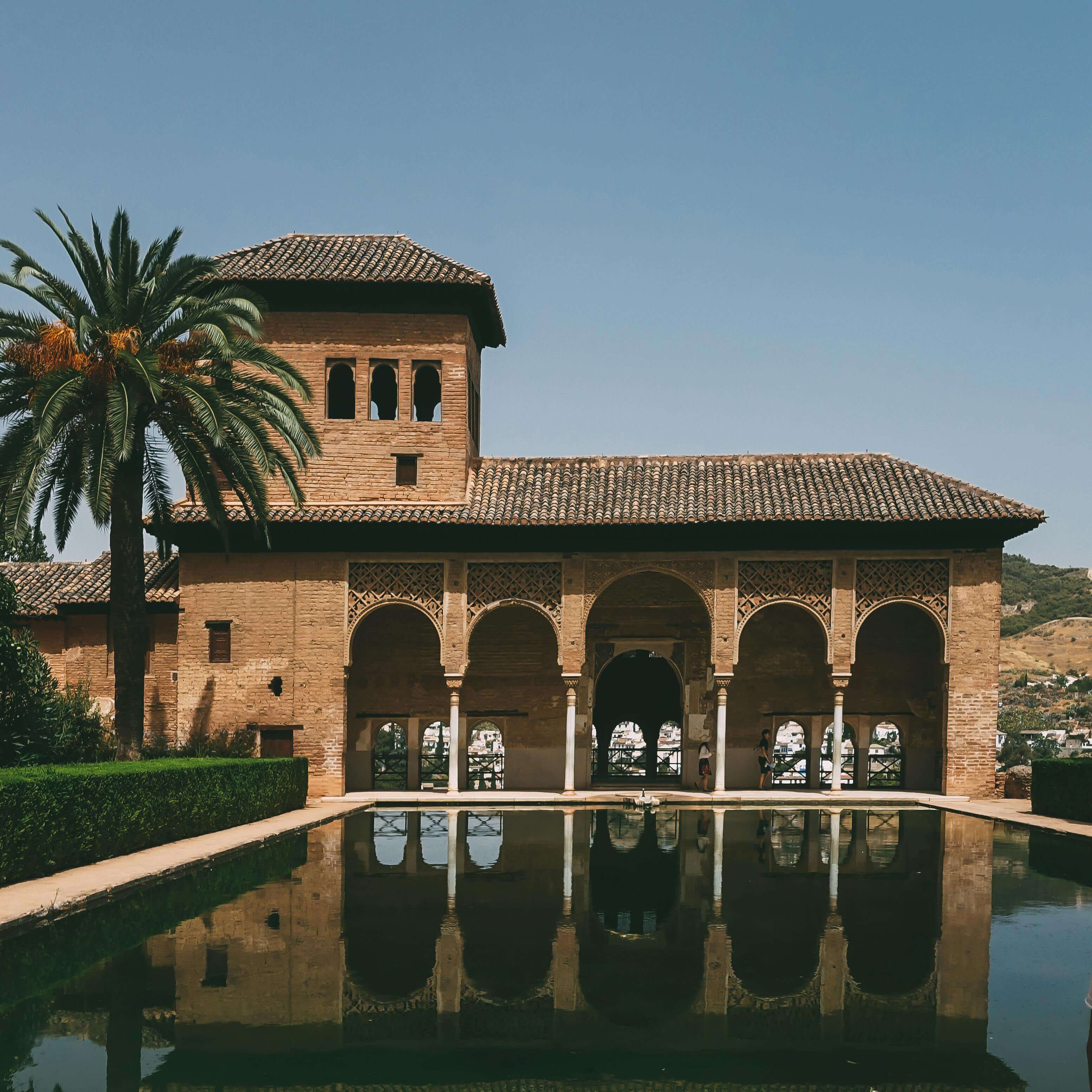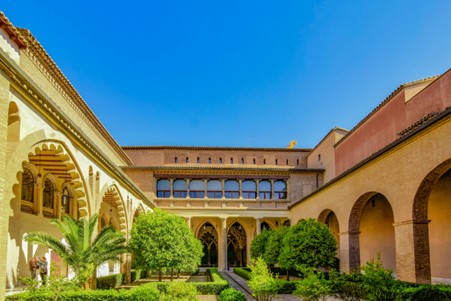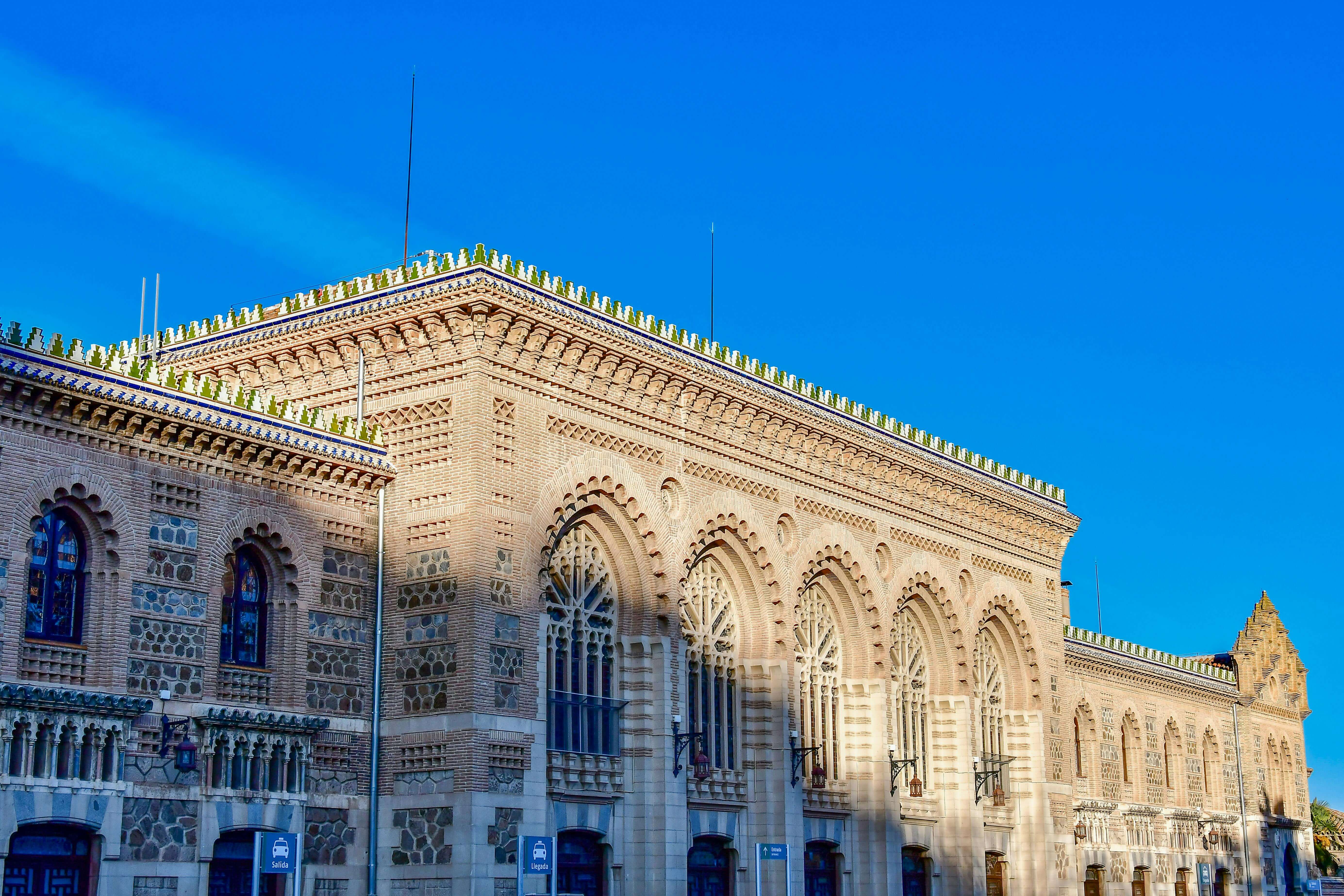Mudejar architecture is one of Spain’s most distinctive expressions of art. This unique style emerged during Medieval times when different cultures co-existed, merging elements of Islamic, Christian and Jewish art. The legacy of this period, which defined the Iberian Peninsula for centuries, is still visible in churches, palaces and towers. It is a testimony of the artistic talent of that time and a symbol of coexistence and cultural adaptation. This article explores the origins, characteristics, main examples and contemporary impact of that fascinating architectural style.

1. Origins and historical context of Mudejar art
Mudejar art emerged out of a unique context: the Iberian Peninsula from the 12th to the 17th centuries, a time marked by the co-existence of Muslims, Christians and Jews after the Reconquista. With the expansion of the Christian kingdoms, many Muslims remained in the conquered areas as Mudejars. They adapted to the new political conditions without completely abandoning their cultural traditions.
The term “Mudejar” comes from the Arabic word mudayyan “allowed to stay”). Interestingly, it describes not only the people, but also the architectural style that emerged from this interaction. Mudejar architecture is not just a mixture of styles, but a reinterpretation in which Islamic techniques and aesthetics were incorporated into Christian buildings and, to a lesser degree, Jewish buildings.
Although the Mudejar style developed in a predominantly Christian context, it reflects the strong influence of Islamic art, especially in the use of simple materials and elaborate decorative techniques. This style was seen throughout Spain, taking iconic features in regions such as Castilla, Aragon and Andalusia, and turning them into one of the most unique expressions of Spain’s cultural heritage.
2. Main characteristics of the Mudejar style
Mudejar art is defined by its ability to transform simple materials into visually complex works of art. The most noteworthy elements of the style include:
Simple, versatile material
Brick is the undisputed star of Mudejar architecture, used in both structures and ornamentation. In addition, plaster, wood and ceramic, were also common. These affordable materials enabled craftsmen to create beautiful buildings without resorting to expensive elements.
Geometric and plant-inspired decor
Mudejar ornamentation is characterised by geometric, Arabic and plant-inspired motifs, elements taken from Islamic art. These painstakingly created patterns cover facades, ceilings and walls, creating a hypnotic visual effect that reflects the craftsmen’s mastery.
Unique decorative techniques
Mudejar art stands out for its use of techniques such as:
- Plasterwork: Reliefs produced in plaster that decorate walls and ceilings.
- Wooden coffered ceilings: Wooden ceilings meticulously carved with geometric shapes and polychromes.
- Glazed ceramics: Brightly-coloured tiles that create striking contrasts and add a touch of brilliance.
Incorporation of Islamic structural elements
The horseshoe arch, lobed arches and Muqarna vaults are some of the Islamic architectural features that remained in Mudejar constructions.
Altogether, the Mudejar style is a masterful example of how Islamic aesthetics found new forms of expression in a Christian environment, adapting to the cultural and religious demands of that era.
3. Main examples of Mudejar architecture in Spain
Spain is home to a rich variety of Mudejar sites that show the diversity and wealth of this style. Below, we highlight some of the most representative ones.
a) The Aljafería Palace in Zaragoza
This palace, originally Islamic, is a precursor of the Mudejar style. After the Reconquista (reconquering), it was turned into a residence for the Catholic Monarchs. Furthermore, Christian decorative elements were incorporated into the original Islamic ornamentation. The Aljafería Palace stands out for its mixtilinear arches and its elaborate plasterwork that combines geometric and floral motifs in a display of creativity.

b) The Aljafería Palace in Zaragoza
Toledo, known as the city of three cultures, is an epicentre of Mudejar art. For example, the San Román church and El Tránsito synagogue demonstrate how this style adapted to different religious contexts. The intricate wooden coffered ceilings and plaster filigrees in these buildings are testimony of the technical mastery and symbolic wealth of Toledo’s Mudejar architecture.

c) Teruel: Aragon’s Mudejar gem
The city of Teruel is home to one of Spain’s most significant Mudejar complexes. In fact, it has been recognised as a UNESCO World Heritage Site. The San Martín tower, the El Salvador tower and the Santa María de Mediavilla Cathedral combine brick and enamelled ceramic in a display of geometry and colours that reflect the splendour of the Aragonese Mudejar style.
d) Andalusia: the perfect mixture
Meanwhile, in Andalusia, Mudejar architecture is combined with gothic and renaissance art, creating a unique hybrid style. The Santa Ana church in Seville and the Casa de Pilatos are iconic examples of how Andalusia’s Mudejar style managed to maintain its Islamic essence while adapting to the aesthetic demands of southern Spain.

e) Castilla y León: Mudejar style in key sites
The region of Castilla y León is home to several well-known examples of Mudejar architecture, including the churches of San Andrés in Cuéllar and San Tirso in Sahagún. Built mainly from brick, these constructions show how the style developed in a rural context. Notably, it adapted to the local needs without losing its decorative character.
4. The legacy and contemporary relevance of Mudejar architecture
Mudejar art is not just a treasure from the past. It is also a source of inspiration for contemporary architecture and design. In fact, its ability to transform simple materials into highly sophisticated works of art is echoed in the modern-day values of sustainability and creativity.
Inspiration in modern architecture
The Mudejar use of geometric patterns and intricate decorations has influenced contemporary architects seeking to combine functionality with aesthetics. Furthermore, this style inspires the creation of spaces that celebrate cultural diversity and the wealth of local traditions.
A model for the co-existence of cultures
The Mudejar style is a reminder that cultures can co-exist and collaborate. In a period marked by division, this architectural style continues to be a symbol of how beauty and creativity can spring out of difference.
Preservation and the challenges of today
Many Mudejar sites face the challenge of preservation due to the passing of time and the lack of resources. It is vital that we raise awareness and support for restoration projects that ensure this valuable heritage is preserved.
In this regard, initiatives that combine tradition with modernity, such as those driven by companies devoted to design and architecture, can play a key role in keeping the Mudejar legacy alive.
Significantly, Mudejar architecture is not just a style, but a bridge between cultures and eras. Every brick, tile and coffered ceiling tells a story of adaptation, ingenuity and collaboration. From the majestic towers of Teruel to the delicate plasterwork of Toledo, Mudejar architecture continues to be a living testimony of Spain’s cultural wealth.
In a world that is constantly evolving, this style invites us to rediscover the value of diversity and be inspired by the past to build a more inclusive and creative future. Just as the Mudejar craftsmen transformed simple materials into works of art, we can learn to find beauty and significance in the combination of cultures and traditions.
Mudejar art is not just for the history books. It is an eternal lesson about human beings’ ability to create harmony out of diversity.

